I am pleased that the Seven Son tree (Heptacodium miconioides ‘Temple of Bloom’, below) planted a year ago has grown vigorously, but most importantly it is now developing flower buds for its August bloom. After a large Seven Son was lost in a summer storm several years ago I was determined to plant another, so when a tree of reasonable size became available several shrubs were relocated to make room. The location was still slightly questionable with only a partial day’s sun, but the developing buds confirm my typical overly optimistic judgment, if only this time.
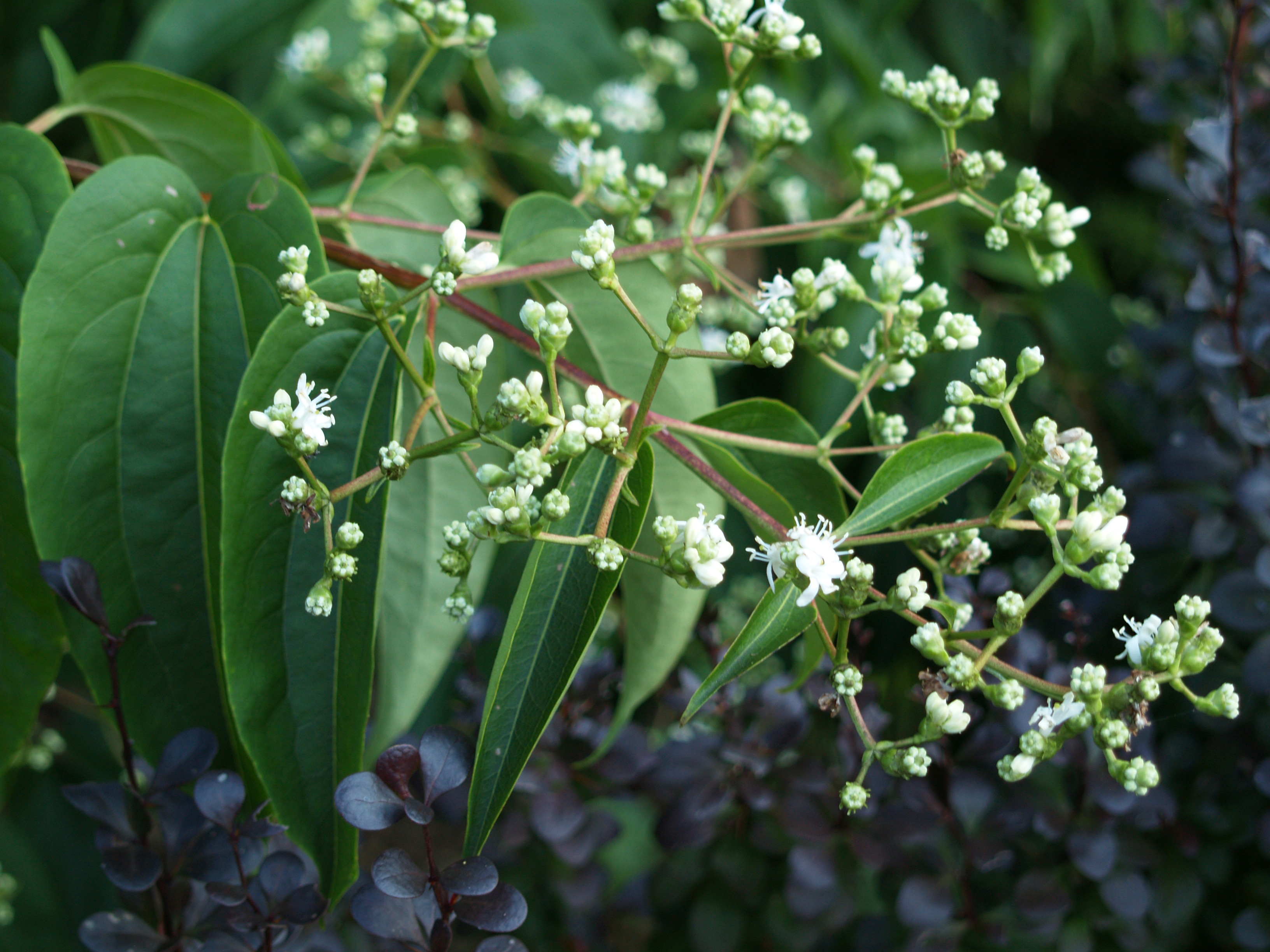
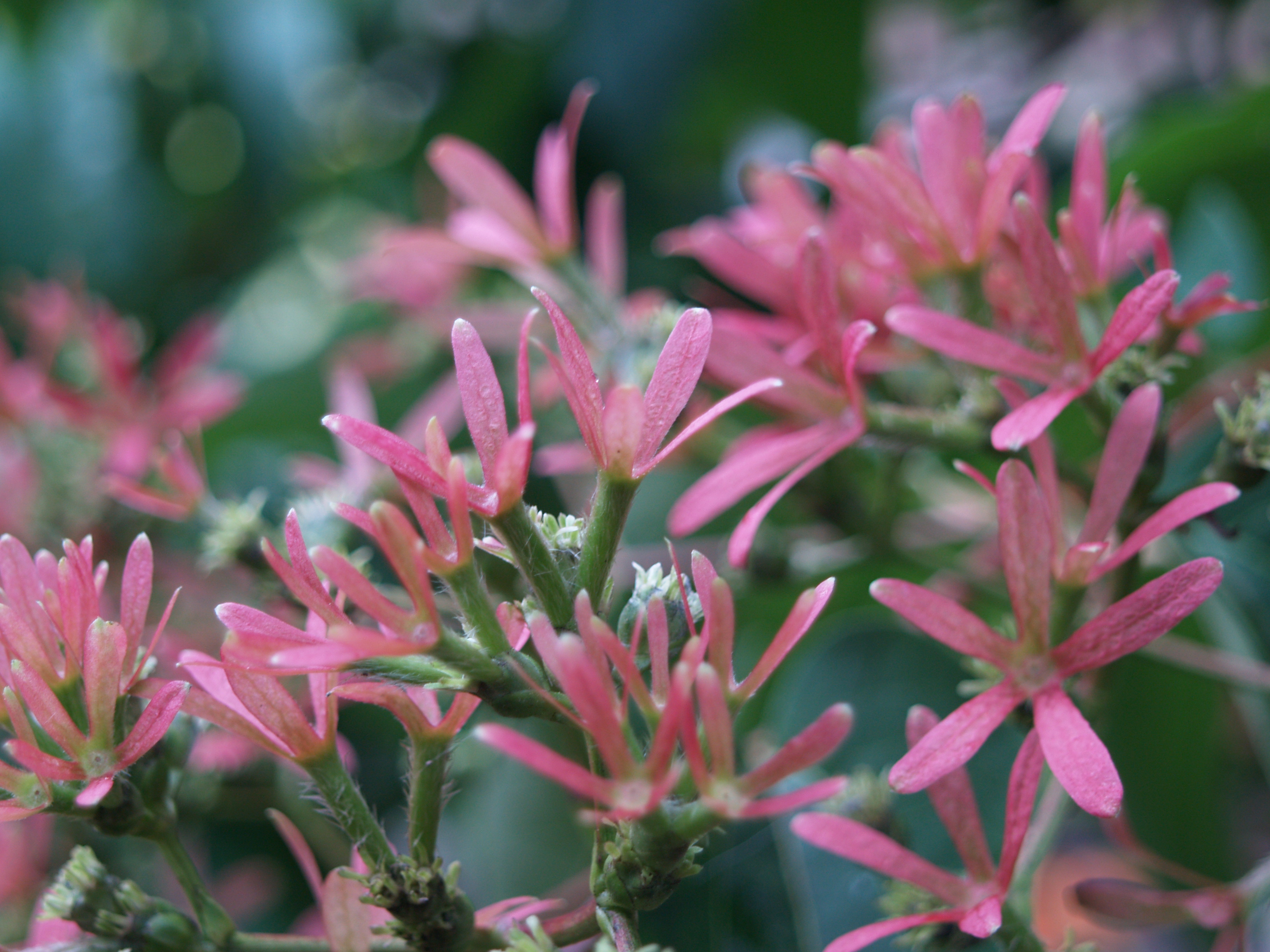
The Seven Son is sometimes called a northern crape myrtle due to its late summer blooms and multi trunk habit, and while I see crape myrtles moving further north as winters become more mild, Virginia is not to the north and the tree’s additional cold hardiness is not a consideration. Its attraction is the clusters of small white flowers, adored by neighborhood bees, which are followed by pink bracts that are showy into early autumn. While the Seven Son that was lost was about fifteen feet in height, ‘Temple of Bloom’ promises a more compact habit that will work perfectly beside this circular patio. Within a few years it will be limbed high so I can walk under its arching branches, a favorite design technique of mine so that arching branches from opposing sides of a path touch overhead.
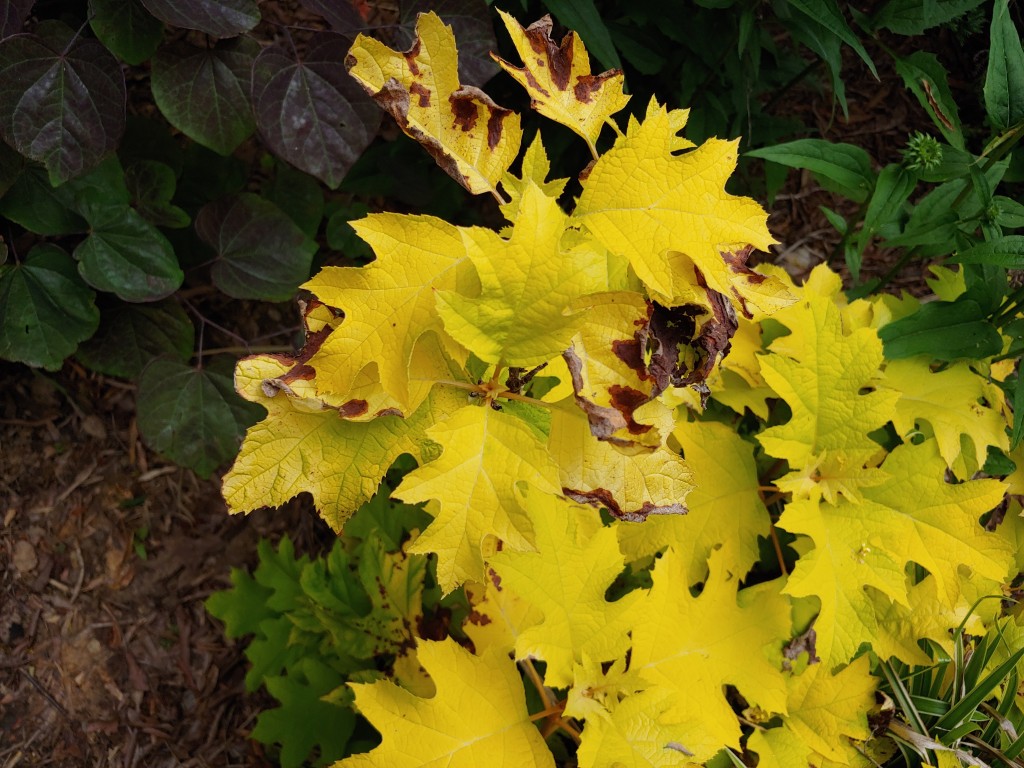
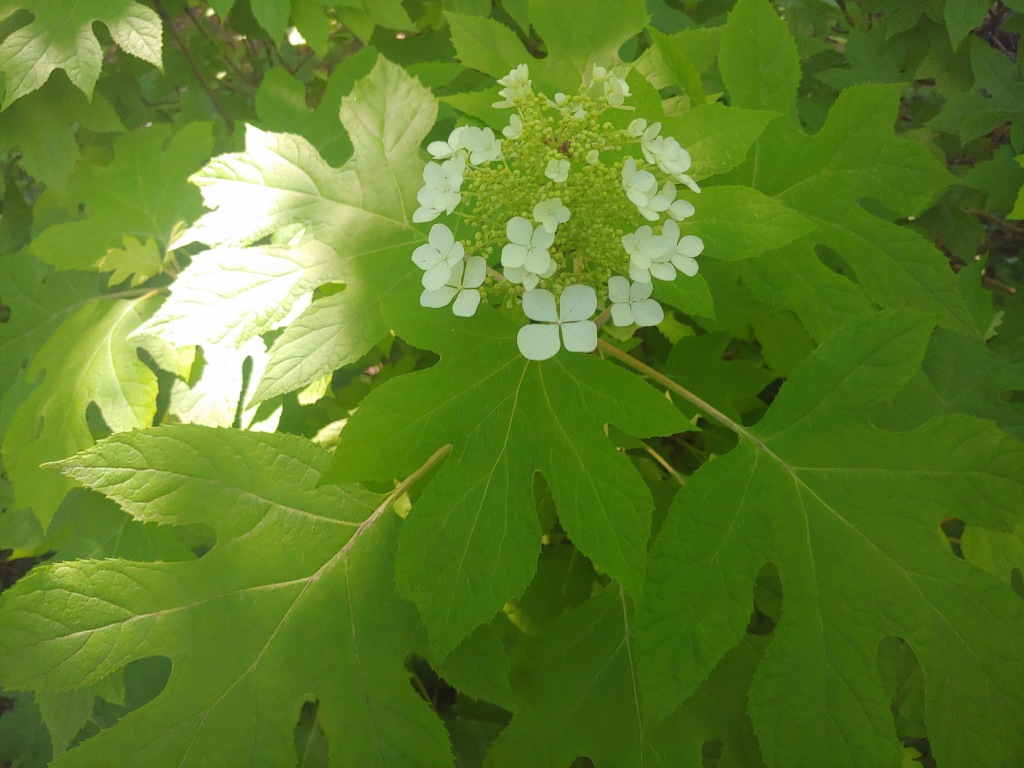
In a half day’s sun, leaves of the yellow leafed oakleaf hydrangea ‘Little Honey’ (Hydrangea quercifolia, above) are undersized and somewhat scorched. This is the rooted stem left behind as the majority of the hydrangea was moved into a shadier spot two years ago. In shade, foliage is much larger and a softer yellow. I am pleased that the shaded hydrangea is flowering this year, so the move has been a complete success. Other green leafed oakleafs flower (below) more sparsely than ones in part sun, but ‘Little Honey’ had its chance and failed in conditions ideal for flowering.
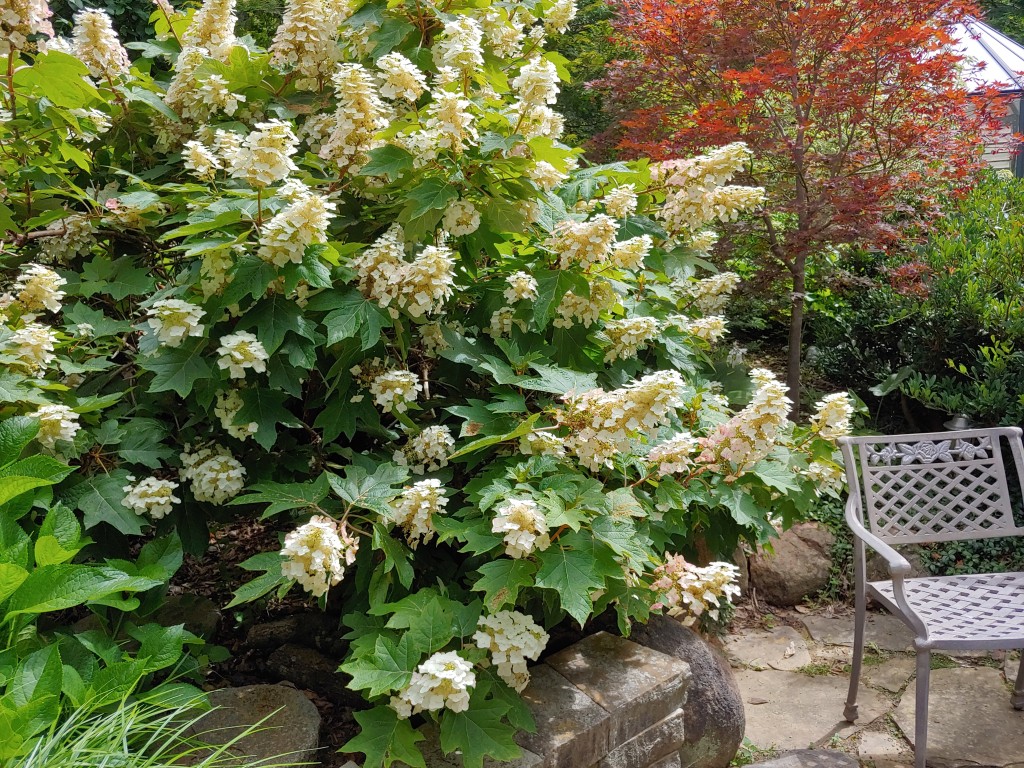
Coneflowers (Echinacea purpurea, below) perfectly illustrate the variability of seedlings. Of course, those of us with multiple children understand this concept. Seedlings of purple and pink-purple coneflowers might not appear much different, but the variability is most evident when ‘White Swan’ is planted and a significant percentage of seedlings are purple (below). A gardener might snip out all the off whites, but along the driveway all flowers are greatly appreciated, the more abundant the better.
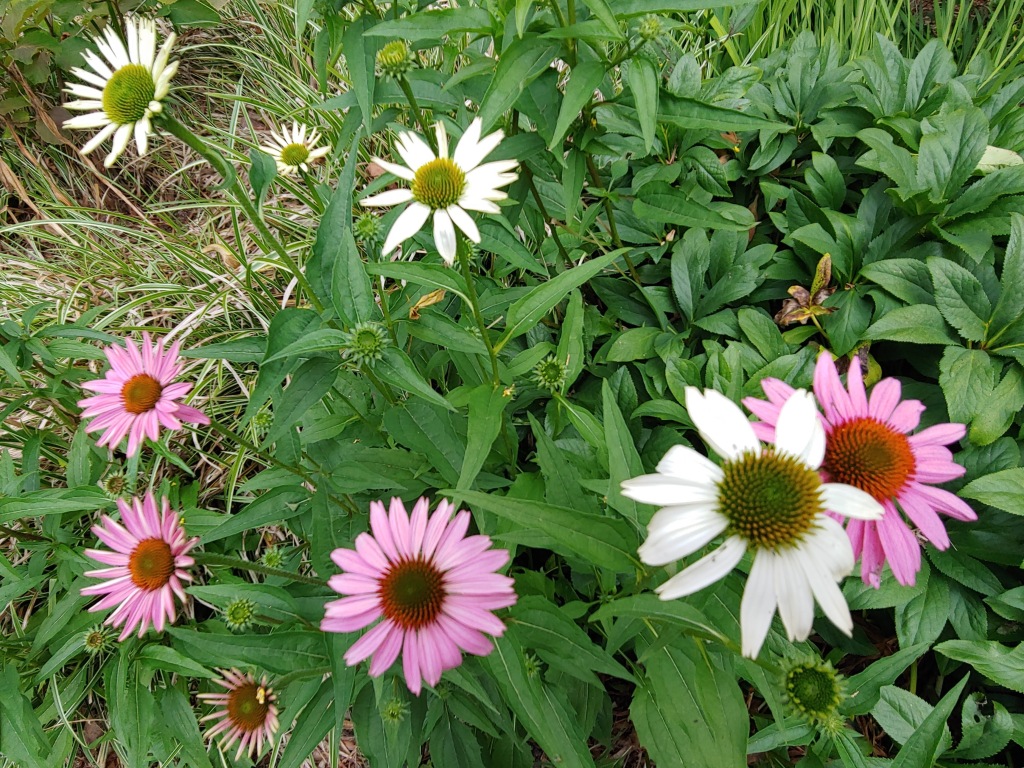
I’m uncertain that there is an ideal placement for the variegated ‘Ukigumo’ Japanese maple (Acer palmatum ‘Ukigumo’, below) in toasty, east coast gardens. I’ve tried varied sites, from half to nearly full shade, and still the foliage color fades by late spring. By contrast, I’ve seen trees in mid-summer in Oregon with far better color that I presume is impossible no matter the maple’s location in this garden. I am happy enough with one in deeper shade, and possibly I’ll work up the motivation to move the one in the sunnier spot some day after it goes dormant in autumn. This tree is getting quite large, so it’s not an easy move, and of course there is less reason to move it with another that shows superior color, but it’s a shame to have a tree in a poorly suited spot.
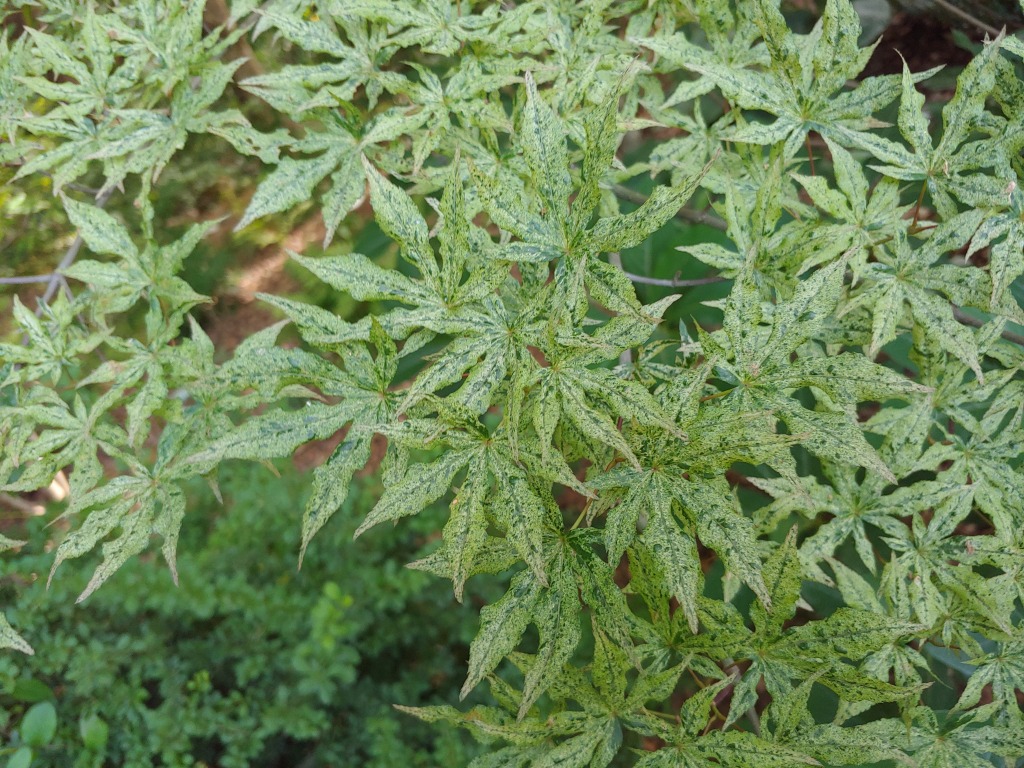
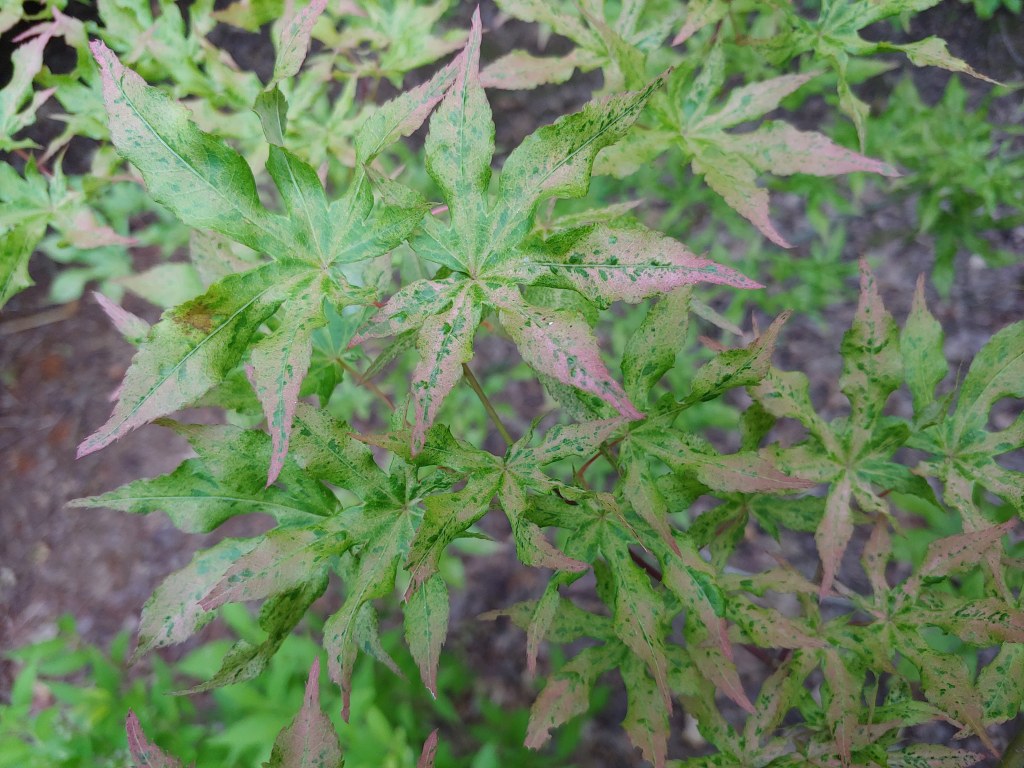
You talk about moving shrubs and trees …I have been reluctant to to try for fear of losing plants. What is the secret to moving mature shrubs.
The decision is always a balance between risk and benefit, as well as an understanding of which plants tolerate a move and how large a plant can be moved successfully. In a few cases I move a high risk plant not caring much if it survives. In the case of making room for the Seven Son I transplanted three tall nandinas from the front to the back. I knew that they were plants that should survive the transplant, and while I don’t recall, I probably moved them just before a rain to give them the best chance. They hardly dropped a leaf.